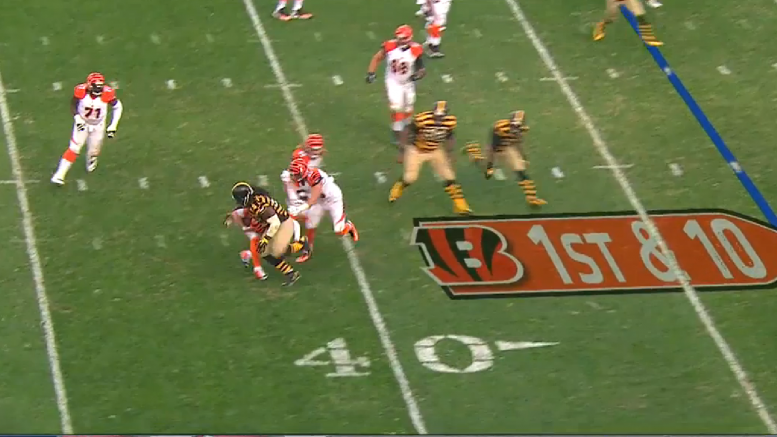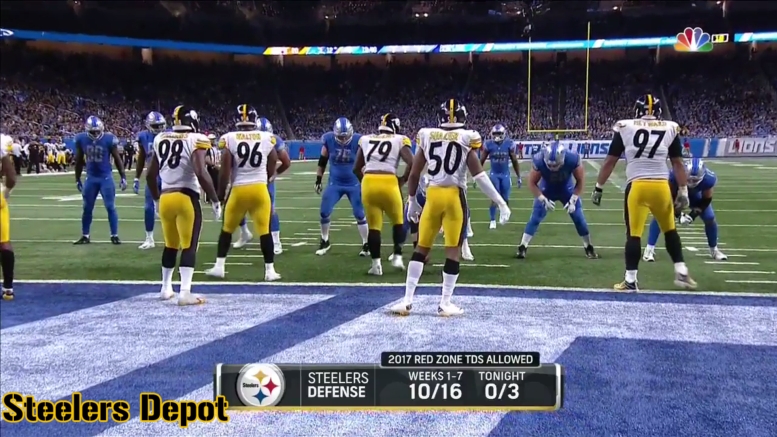When the Pittsburgh Steelers defense took the field for the first time yesterday afternoon, they did so in their nickel defense, in which they stayed for most of the game. They also did so with nose tackle Steve McLendon lined up as the left defensive end.
Since Stephon Tuitt’s injury late in the fourth quarter two weeks ago, McLendon has been the primary nickel defender on the line next to Cameron Heyward as the two most experienced linemen. McLendon, of course, came to the Steelers as a defensive end before bulking up and becoming the starting nose tackle in 2013.
When the Steelers did go to their base package, it was McLendon lined up at left defensive end, however, with Daniel McCullers—two games back from a knee injury—lining up at nose tackle, the team believing that this gives them the best front three available to them until Tuitt is able to return, hopefully next week.
As a matter of fact, while the Steelers only very sparsely used their base defense, McLendon did not log any time at all at nose tackle in this game, staying in strictly as the left defensive end, and as a defensive tackle in the nickel defense.
As a result, it led to him playing the most snaps of his career, logging 56 of 70 defensive snaps, primarily as a sub-package player, as the Steelers spent most of their time in the nickel as it is.
Most crucial is the fact that McLendon finally showed some signs of life as a pass rusher, which is something that was anticipated, but has been lacking, since his playing time increased when he entered the starting lineup.
The veteran notched his first sack of the season during the game in addition to registering a couple of other minor pressures here and there, but he nearly had two sacks, just missing on a fleeing Andy Dalton on a third and six play in the third quarter that forced him to pitch the ball wildly as he went to the ground.
The Steelers’ ensuing drive ended disastrously, but McLendon came back on the next snap to record a sack from the left end position, for some reason with the Bengals choosing to defend him with a tight end. As Dalton rolled out of the pocket to his right, the big man was there to greet him violently.
McLendon came back on the next snap, on second and 19, this time out of the nickel, beating the center up the middle to gain penetration. He pressured Dalton and forced the quarterback to throw the ball into the dirt, though the play was ultimately negated by a holding call on the Bengals.
Truth be told, McLendon’s run defense actually struggled some, particularly early on, against Cincinnati’s Jeremy Hill, including a missed tackle, but his performance in the run game is a known commodity. It was his spark of life in the passing game that is the story here, one that must continue.








